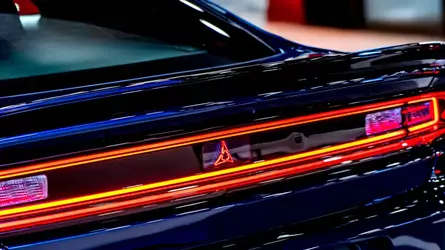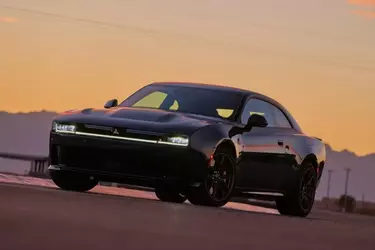
Source: Carscoops Archive:ghost
- Edmunds recently experienced unintended acceleration in its Charger Daytona test vehicle.
- Similar issues have been reported online, prompting a response from automaker Stellantis.
- It says this is a ‘drive-by-brake’ safety feature that has been on combustion cars for years.
For most folks, a car that accelerates on its own is a dangerous proposition. Just ask Toyota — those unintended acceleration headlines weren’t exactly a PR dream. According to Stellantis, though, that’s a meticulously engineered safety feature. It just happens to be one that we haven’t really heard about before today.
In fact, it only entered the spotlight after Edmunds experienced the issue firsthand with its Dodge Charger Daytona long-term tester, which began picking up speed without the driver’s input.
To put things lightly, the launch of the Charger Daytona hasn’t gone as well as Stellantis might have hoped. That said, it’s still a vehicle worthy of testing and reviewing, and that’s why Edmunds has one. What they likely never expected was that it would speed up on its own one day.
An Unexpected Moment
According to the tester who was behind the wheel at the time, things went sideways almost immediately:
“I was pulling out onto a thoroughfare street from a strip mall parking lot when warning lights appeared on the Charger’s instrument panel for the stability control, frontal collision warning system, regenerative braking, and more. There was also a short-lived message — it might have been something about the forward collision warning system — and that the car would be in low power mode. This wasn’t good. I could tell something was wrong because the car accelerated sluggishly.
Once up to speed, the Charger did the thing we’re all here to talk about. It kept accelerating even after the driver lifted their foot off of the pedal. That’s weird in any car, but even stranger in an EV, where regenerative braking usually slows the car down faster than in a combustion car.
According to the driver, this wasn’t rapid acceleration, but more akin to the speed one typically gains in an automatic car when letting off of the brakes from a dead stop. Except, rather than only being capable of picking up a little speed, it managed to add around one mile per hour each second that the brakes weren’t applied. That said, the brakes did work, albeit with more force necessary (according to the driver) than normal.
“I let the car accelerate by itself as a test. It reached about 45 mph before I had to apply the brakes again for another stop sign. That was enough. Using the time-tested fix for all things tech. I pulled off onto a side street from the stop sign and parked. Fortunately, the acceleration stopped when I put the transmission in Park.”
For its part, Stellantis says that this is the way it’s designed, but we’ll circle back to that. First, it’s important to point out that Edmunds isn’t alone. Thomas Hundal over at The Autopian compiled a list of similar instances documented online.
That included one complaint directly to the NHTSA, where a driver claimed that the car sped up even after they were off the accelerator. They finished their complaint with an important detail. “I regained control using the brake alone.” When confronted with this evidence, Stellantis responded, and the statement it gave was a whopper.
All Of This Is Intentional, Says Stellantis

Here’s the statement in full before we break it down a little.
“In the rare event of an accelerator pedal fault, Stellantis has implemented a ‘drive-by-brake’ safety feature, which allows the driver to control speed through the brake pedal. In this instance, the feature worked as intended, and the driver was able to safely maneuver the vehicle off the road. This feature has been in Stellaris internal combustion engine vehicles for many years and has been carried over to battery electric vehicles.”
That’s right, folks, nothing to see here. “The feature worked as intended.” This is especially gobsmacking because the car doesn’t tell the driver what is happening. It doesn’t alert drivers to, you know, drive via the brake pedal. Of course, many electric cars now feature one pedal driving, but those ones use active regenerative braking to slow down when no input is provided.
It seems that the Charger Daytona is fitted with technology that does the exact opposite. It’s worth noting that while Stellantis says this is a feature carried over from combustion cars, we can’t find any examples of it. There’s no mention of it in past press releases, owner’s manuals, or any other documentation we’ve checked up until now, though we’re still digging, and if anything turns up, we’ll update the story.
For now, at least, several outlets are trying to get the word out to Charger Daytona owners that if their cars accelerate when they don’t expect it, it’s totally normal. Honestly, this doesn’t sound like a totally terrible feature so long as owners know what to expect and when to expect it. We’ve reached out to Stellantis in hopes of learning more about the situation. If we hear back, we’ll update you here.
